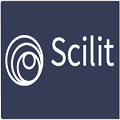Technostress In The Digital World And Impact On Employee Work Performance And Mental Health
DOI:
https://doi.org/10.48001/jbmis.1102005Keywords:
Technostress, mental health, work performance, job flexibility, managerial support, diversityAbstract
Modern work terminology uses ‘technostress’ to describe the negative consequences of digital technology. Thus, while digital technology boosts productivity and efficiency, excessive use has increased stress, affecting employee well-being and productivity. This study uses People at Work 2023: A Global Workforce View Report data and regression analysis to examine technostress’s effects on mental health and work performance. Digital tools increase flexibility and efficiency, but they also increase stress, especially in Asia-Pacific compared to North America. Constant connectivity and pressure to stay online harm employees’ mental health, making it harder to balance work and life. The regression analysis shows that ‘managers not being equipped to handle mental health’ significantly worsens the impact of stress on work performance, emphasizing the need for better mental health awareness training for managers. Lack of diversity, equity, and inclusive initiatives (DEI) increases stress, emphasizing the need for inclusive workplaces. Wanting more flexibility in working hours and having open conversations about mental health had no significant effect, suggesting that while these factors raise awareness and improve work-life balance, they do not reduce stress alone. This study emphasizes the need for mental health initiatives, ”right to disconnect” policies, and better management training to reduce technostress and
improve employee well-being.
References
Ayyagari, R., Grover, V., & Purvis, R. (2011). Technostress: Technological antecedents and implications. MIS Quarterly: Management Information Systems, 35(4), 831–858. https://doi.org/10.2307/41409963
Bakker, A. B., & Demerouti, E. (2017). Job demands-resources theory: Taking stock and looking for ward. Journal of Occupational Health Psychology, 22(3), 273–285. https://doi.org/10.1037/ocp0000056
Barley, S. R., Meyerson, D. E., & Grodal, S. (2011). E-mail as a source and symbol of stress. Organization Science, 22(4), 887–906. https://doi.org/10.1287/orsc.1100.0573
Bernard, M. (2023). How To Deal With Cyberbullying At Work. Forbes. https://www.forbes.com/sites/bernardmarr/2023/01/18/how-to-deal-with-cyberbullying-at-work/?sh=399b1d087564
Bond, J. T., & Galinsky, E. (2011). Workplace flexibility and Low-wage employees. National Study of the Changing Workforce, 16. http://familiesandwork.org/downloads/WorkFlexandLowWageEmployees.pdf
Coyne, I., Farley, S., Axtell, C., Sprigg, C., Best, L., & Kwok, O. (2017). Understanding the relationship between experiencing workplace cyberbullying, employee mental strain and job satisfaction: a dys empowerment approach. International Journal of Human Resource Management, 28(7), 945–972. https://doi.org/10.1080/09585192.2015.1116454
Demerouti Evangelia, Bakker Arnold B, Nachreiner Friedhelm, & Schaufeli B wilmar. (2001). The Job Demands-Resources Model of Burnout. Journal of Applied Psychology, 86(3), 499–512. https://www.isonderhouden.nl/doc/pdf/arnoldbakker/articles/articles_arnold_bakker_69.pdf
Duchek, S., Raetze, S., & Scheuch, I. (2020). The role of diversity in organizational resilience: a theoretical framework. Business Research, 13(2), 387–423. https://doi.org/10.1007/s40685-019-0084-8
Eaton, S. C. (2003). If you can use them: Flexibility policies, organizational commitment, and perceived performance. Industrial Relations, 42(2), 145–167. https://doi.org/10.1111/1468-232X.00285
Gallup. (2022). Job satisfaction and security among digital workers worldwide in 2022 (tech. rep.). AWS
Global Digital Skills Study. https://assets.aboutamazon.com/dd/e4/12d668964f58a1f83efb7ead4794/aws-gallup-global-digital-skills-study-report.pdf%0A%0A
Hong, L., & Page, S. E. (2004). Groups of diverse problem solvers can outperform groups of high-ability problem solvers. Proceedings of the National Academy of Sciences of the United Statesof America, 101(46), 16385–16389. https://doi.org/10.1073/pnas.0403723101
Jackson, S. E., Joshi, A., & Erhardt, N. L. (2003). Recent research on team and organizational diversity: SWOT analysis and implications. Journal of Management, 29(6), 801–830. https://doi.org/10.1016/S0149-2063(03)00080-1
Kowalski, R. M., Toth, A., & Morgan, M. (2018). Bullying and cyberbullying in adulthood and the workplace. Journal of Social Psychology, 158(1), 64–81. https://doi.org/10.1080/00224545.2017.1302402
Nielsen, M. B., Tangen, T., Idsoe, T., Matthiesen, S. B., & Magerøy, N. (2015). Post-traumatic stressdisorder as a consequence of bullying at work and at school. A literature review and meta-analysis. Aggression and Violent Behavior, 21, 17–24.https://doi.org/10.1016/j.avb.2015.01.001
Qiang, T., Kanliang, W., & Qin, S. (2005). Computer-Related Technostress in China. Communicationsof the ACM, 48(4), 77–81.https://doi.org/10.1145/1053291.1053323
Ragu-Nathan, T., Tarafdar, M., & Bhanu S. Ragu-Nathan. (2009). The Consequences of Technostress forEnd Users in Organizations: Conceptual Development and Empirical Validation. InformationSystems Research, Vol. 19(4, Diakses 23 Mei 2018), 417–433.
Ray, T. K., & Pana-Cryan, R. (2021). Work Flexibility and Work-Related Well-Being. InternationalJournal of Environmental Research and Public Health, 18(6), 3254.https://doi.org/10.3390/ijerph18063254
Richardson, N., & Antonello, M. (2023). People at Work 2023: A Global Workforce View. (tech. rep.).ADP Research Institute.https://www.adpri.org/wp-content/uploads/2023/04/People-at-Work-2023-A-Global-Workforce-View-1.pdf
Sangal, R. B., Bray, A., Reid, E., Ulrich, A., Liebhardt, B., Venkatesh, A. K., & King, M. (2021).Leadership communication, stress, and burnout among frontline emergency department staffamid the COVID-19 pandemic: A mixed methods approach. Healthcare, 9(4).https://doi.org/10.1016/j.hjdsi.2021.100577
Sanjeeva Kumar, P. (2024). TECHNOSTRESS: A comprehensive literature review on dimensions, im-pacts, and management strategies. Computers in Human Behavior Reports, 16.
Tarafdar, M., Cooper, C. L., & Stich, J. F. (2019). The technostress trifecta - techno eustress, technodistress and design: Theoretical directions and an agenda for research. Information SystemsJournal, 29(1), 6–42.https://doi.org/10.1111/isj.12169
Tarafdar, M., Pullins, E. B., & Ragu-Nathan, T. S. (2015). Technostress: Negative effect on performanceand possible mitigations. Information Systems Journal, 25(2), 103–132.https://doi.org/10.1111/isj.12042
Wang, H., Ding, H., & Kong, X. (2023). Understanding technostress and employee well-being in digitalwork: the roles of work exhaustion and workplace knowledge diversity. International Journal ofManpower, 44(2), 334–353.https://doi.org/10.1108/IJM-08-2021-0480
WHO. (2022). World mental health report: transforming mental health for all. (tech. rep.). WHO.https://www.who.int/teams/mental-health-and-substance-use/world-mental-health-report
Wu, A., Roemer, E. C., Kent, K. B., Ballard, D. W., & Goetzel, R. Z. (2021). Organizational bestpractices supporting mental health in the workplace. Journal of Occupational and EnvironmentalMedicine, 63(12), E925–E931.https://doi.org/10.1097/JOM.0000000000002407
Zhang, Z., Wang, H., Zhang, L., & Zheng, J. (2022). Workplace cyberbullying and interpersonal deviance:roles of depletion and perceived supervisor support. Asia Pacific Journal of Human Resources,60(4), 832–854.
Downloads
Published
How to Cite
Issue
Section
License
Copyright (c) 2024 QTanalytics India (Publications)

This work is licensed under a Creative Commons Attribution-NonCommercial 4.0 International License.
The copyright in this website and the material on this website (including without limitation the text, computer code, artwork, photographs, images, music, audio material, video material and audio-visual material on this website) is owned by QTanalytics India (Publications) and its licensors.










 qtanalyticsindia@gmail.com | Phone: +91-9458270556 | URL:
qtanalyticsindia@gmail.com | Phone: +91-9458270556 | URL: 
